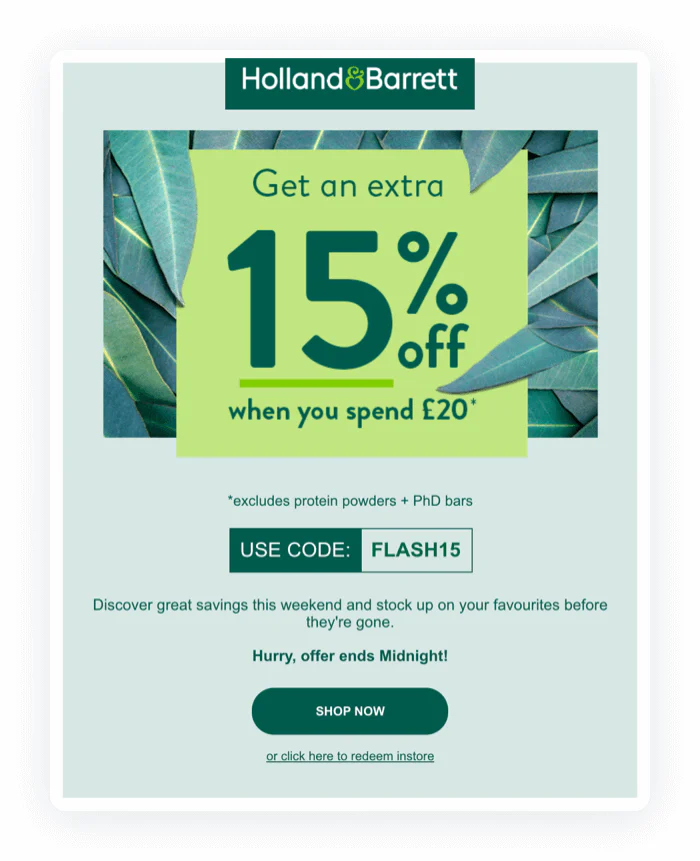10 Tips to Optimise Your Email Marketing Campaign for Higher Conversion Rates
Sending emails, to this day still is one of the best online marketing strategies, it still delivers an impressive amount of Return On Investment (ROI) for being such a simple practice.
Optimising your email marketing strategies and campaign has become such a crucial point to be able to stand out from the rest.
Why You Need to Optimise Your Email Marketing Campaign
Optimising your email marketing strategy is a good way for you to increase engagement rates, to increase click throughs and ultimately drive higher conversion rates. 💪
However, things have changed a bit with increasing competition and evolving customer behaviours. Simply sending out emails to advertise your content isn’t as easy as it used to be.
The expectations from customers have drastically changed and are now more difficult to meet, and so has the digital marketing landscape. It has become highly competitive, with countless businesses vying for consumers' attention.
☝️An optimised email campaign ensures that your messages cut through the noise and reach your target audience effectively.
Best Practice #1: Design Your Email Layout
Having a regular email with only text doesn’t seem appealing at first glance, which is the one thing we're trying to avoid here. You can remedy to unappealing email designs quite simply, however there are certain things you can do to boost your email design to maximise your audience’s interest:
- Make sure to highlight the important information you want by taking a font colour which contrasts well from the background.
- Make use of photos or images for your emails to make them look more interesting, however don’t overdo it as it can make the email look too crowded and overwhelming.
Best Practice #2: Use Compelling Subject Lines
The subject line is one of the most important aspects of your email, as it’ll be the first thing the customer will read. There are multiple small factors to keep in mind when writing it:
- You want your subject line to be very brief. You can make it into a short sentence that’s easy to read so as not to “discourage” the customer from reading.
- In these few words you want to be straightforward about the subject of the email, for example: “limited time offer”, now the reader knows what the email is about.
- You can personalise the subject line by using softwares matching the name of the recipient and putting it in the subject line, for example: “Hey Tony! Your exclusive discount awaits!”
There are also practices you want to avoid, especially the use of capitalization in subject lines. Do not use all caps as your message may be considered as spam simply based on this factor alone.
Best Practice #3: Personalise Your Emails
Personalization goes beyond addressing the recipient by name. It involves using data to tailor the content and offers in your emails to individual preferences and behaviours. Personalised emails can significantly improve open and click-through rates. 🎯
- Use dynamic content blocks that change based on the recipient’s profile. For example, display different products or offers depending on previous purchase history.
- Behavioural Triggers are for example emails triggered by specific actions, such as abandoned cart reminders, post-purchase follow-ups, or re-engagement campaigns for inactive users.
- Personalised Recommendations with the use of algorithms to recommend products or content based on previous interactions. This can increase the relevance and value of your emails.
Best Practice #4: Analyse All Types of Data
By tracking data, you can get very important insight on different pieces of information. There are different types of data which you want to analyse:
- You have to analyse open rates because if you see that a very low percentage of your emails are being opened it may suggest they’re getting caught by spam filters or suffer from some other problem.
- You want to take click-through rates into account as they will be able to show the percentage of people who do check your message. If the percentage is low it may suggest your emails are either irrelevant to them or that your email presentation is very confusing making people click off.
- Consumer data can help you personalise your emails for specific groups of individuals which construct your audience. Thanks to that you can maximise your chances of click throughs by sending them information you’re sure they’ll be interested in.
Best Practice #5: Segment Your Audience
Audience segmentation is the cornerstone of email marketing optimization. ❗
It works by dividing your email list into smaller, more targeted groups based on demographics, behaviours, and preferences, so you can send more relevant content to each segment.
This personalised approach increases the likelihood of engagement and conversions.
☝️There are a few ways in which you may segment your subscribers effectively:
- based on their previous data from various sources such as website behaviour, purchase history, and email interactions. This data can help you create meaningful segments.
- based on what demographic group they’re a part of, like age, gender, location, or income level, their work as it usually correlates to the types of product they’re interested in.
- based on their behaviours such as past purchases, browsing history, or engagement with previous emails.
Best Practice #6: Optimise Sending Times
There are lots of times you want to prioritise targeting for a maximum amount of click-throughs for your emails, and you can know when thanks to the data you collect. There are a few factors you want to keep in mind for scheduling your emails:
- Consider the time at which your consumers are most reactive to your email to make sure to take time zones into account for when you send your emails. If your recipient receives an email notification during the start of the evening as there’s more chance they’ll click on it rather than if you sent it at 03:00 in the morning.
- For companies such as E-commerce stores, event and entertainment organisers or subscription services in general, sending your emails on weekends when consumers are free can also help as they will have time to give towards it.
- The worst mistake you want to avoid making is advertising what would normally be a product relevant to some people of your audience without considering external factors. For example if a company selling luxury travel packages advertises heavily during an economic downturn. While some of their audience might still be interested, the majority are likely more focused on financial stability and cutting back on non-essential spending due to the external economic conditions. This misalignment could result in low conversion rates and ineffective use of marketing resources. Or without considering seasonal factors, for example if a clothing brand tries to sell coats in summer the demand will be considerably lower.
Best Practice #7: Implement A/B Testing
A/B testing, also known as split testing, is a method where two versions of an email are compared to determine which one performs better. This practice allows you to experiment with different elements of your email to see what resonates most with your audience, ultimately improving your campaign's effectiveness.
Best Practice #8: Optimise for Mobile
People check emails on their mobile devices more and more, so ensuring your emails are mobile-friendly is essential. A responsive design ensures that your emails look great on any device, leading to better user experiences and higher engagement rates.
Tips for Mobile Optimization:
- Single-Column Layout: Use a single-column layout for better readability on small screens. Avoid complex designs that can be hard to navigate on mobile devices.
Example:
- You should absolutely use large fonts for your emails, as it’s very easy for people to focus on and read. Large buttons follow the same principle, you need them to be easy to see and easy to click on.
- Concise Content: Keep your email content short and to the point. Mobile users are often on the go and prefer short and straight forward messages.
When you try to test your formats across different types of device, you will need to implement responsive design techniques to ensure your emails adapt to different screen sizes. You can also use softwares to be able to get a preview of your emails on different screen types. ✅
Best Practice #9: Email Bulk
Bulk mailing or blast mailing is commonly used by businesses and organisations to communicate with a broad audience efficiently and cost-effectively. It consists in sending a general email to a very big number of people. To be considered a “Bulk Mailer” you need to send around 5000 emails per day.
Bulk mailing serves various purposes, such as :
- promoting products or services,
- sharing news and updates,
- conducting surveys,
- nurturing customer relationships.
By Bulk mailing, not only do you ensure efficient communication, but you also maximise the impact of marketing efforts through targeted and relevant messaging.
Best Practice #10: Respect Marketing Regulations
The one thing you want to avoid is putting yourself in legal trouble by breaching legal regulation, whether from the Federal Trade Committee (FTC) or by the General Data Protection Regulation (GDPR).
To avoid trouble, you want to be honest and transparent to your audience in the exercise of your practices. A few mistakes you want to avoid making are:
You can also upgrade the efficiency of your bulk email efforts by applying the previous tips to this one.

Campaigner
Bonus Best Practice : Use the Right Tools
A common and very useful tool you should use is an email marketing software. It’s designed to enhance and streamline your email marketing efforts, ensuring that your campaigns are as effective as possible.
Our recommendation for you is Campaigner.
Campaigner’s email marketing optimization software provides the tools needed to create targeted, engaging, and effective email campaigns. It’s an ideal choice for businesses looking to enhance their email marketing strategy and achieve better results.
Some of these tools include:
- advanced segmentation,
- powerful automation,
- detailed analytics,
- high deliverability rates,
- robust A/B testing capabilities
- user-friendly interface
Your Frequently Asked Question on Email Marketing
- What is optimization in email marketing?
Optimization in email marketing refers to the continuous process of refining and enhancing various elements of your email campaigns to improve their effectiveness and performance.
The goal of optimization is to achieve better engagement, higher open rates, increased click-through rates, and ultimately, greater conversion rates.
- What is the importance of personalization in email marketing optimization?
Personalization in email marketing optimization is crucial for several reasons, as it significantly enhances the relevance, engagement, and effectiveness of email campaigns.
- How does user segmentation contribute to email marketing success?
User segmentation is a very efficient strategy that enhances the effectiveness of email marketing by delivering more relevant, personalised, and timely content to recipients.
By segmenting your audience, you can improve engagement, increase conversion rates, provide a better customer experience, and make more efficient use of your resources.
Implementing effective segmentation strategies will lead to more successful email marketing campaigns and a higher return on investment.
- How can automation contribute to email marketing?
Thanks to Automation, you could deliver personalised, timely, and relevant content to your audience, leading to improved engagement and higher conversion rates.
Automation also frees up valuable time for marketers, allowing them to focus on strategy and creative tasks rather than manual processes.
Implementing automation in your email marketing strategy is essential for staying competitive and achieving long-term success.
What You Need to Remember About Email Marketing Optimization
Optimising your email marketing strategy involves various practices, from audience segmentation and personalization to respecting regulations and analysing data.
By implementing these best practices, including A/B testing, you can enhance your email campaigns' effectiveness, resulting in higher engagement and conversion rates. Utilise the right tools, like Campaigner, to streamline and enhance your efforts, ensuring long-term success in your email marketing endeavours.
